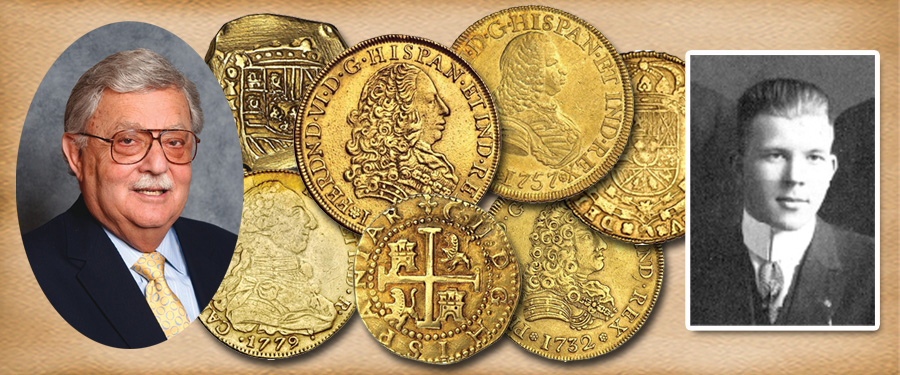
I want to stress to the reader that Josiah K. Lilly was an extraordinary
collector. He did not collect just one type of coin or object of art, but was a man who desired
to assemble a variety of items and
make those collections as complete as he could. He had an insatiable desire to amass great historical
collections that would
illustrate the history of the periods he was interested in, both in America, as well as worldwide.
He loved research and developed a library of great renown. He gathered collections of things
rarely seen in one place with the goal of having his collections relate to the
economic and historical growth
of the world.
As you know, from the beginning of his interest in
Spanish American Gold Doubloons during his first visit to Stack’ s in New York, he wanted to own money from before the
American Revolution, that was part
of the economic growth of our country. This interest led to Mr. Lilly’s
gathering United States gold coins and resulted in collections that were
virtually complete. As his interest in gold and its place in history grew, he
began to accumulate Ancient Greek, Roman and Byzantine coins, through to pieces
from the Medieval and Renaissance eras, right up to those of America in
1933. These pieces told a story for him
and confirmed the role gold coins
played in worldwide commerce as the economics of the world changed.
Mr. Lilly’s interest in history fostered an interest
in rare books and
manuscripts and a desire to retain the
printed word for future reference and study. Many volumes in his collection
were first or unique editions. He started with early copies of both English and
American interest. During
my first visit to the Eagle’s Nest, I saw a huge wing on the building and learned that was where his library was housed.
Though we talked about the library during a number
of my visits,
it was not until about 1954 that I had
the privilege of venturing into that wing. It was behind a steel safe-type
door, perfectly insulated against heat and moisture, to preserve the books and
manuscripts. He loved these
collectibles, and each volume was housed in special library boxes, labeled on the exterior. The first volumes
I saw were the “first
editions” of William
Shakespeare, and then I saw and held a Guttenberg Bible, the Audubon original folios, the
original works of Edgar Allen
Poe, and original works of Mark Twain, to mention but a few. In addition I saw
Albrecht Durer’s “Apocalypse” and the first edition of Chaucer’s “Canterbury
Tales” printed in the 1470’s. Among more modern works he had original Ian
Fleming books and manuscripts.
Among the document files I saw the letter from
George
Washington accepting the Presidency of
the United States, and a copy
of the Declaration of Independence from John Hancock. There were also old and important maps, including an Ancient
hand-painted map.
Housed in the library were some 20,000 books plus
17,000
manuscripts. Just to be able to walk
through and see these great treasures was an experience I could never forget.
In 1960, the Lilly Foundation built a magnificent
library at Indiana University in Bloomington,
and it was to this facility that Mr. Lilly donated his collection. It is named The Lilly Library and is one
of the most important collections of
books and documents in America.
In my next installment I will reminisce about other
of Mr. Lilly’s collections that I had the privilege of seeing.





